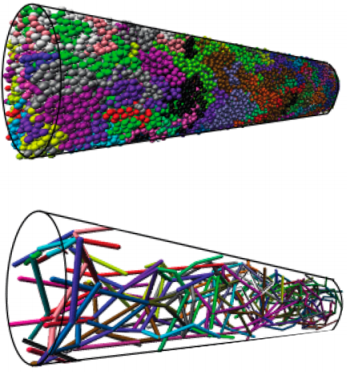Abstract
We simulate and theoretically analyze the properties of entangled polymer melts confined in thin film and cylindrical geometries. Macromolecular-scale conformational changes are observed in our simulations: the average end-to-end vector is reduced normal to the confining surfaces and slightly extended parallel to them, and we find that the orientational distribution of the chain end-to-end vectors is transmitted to the primitive path entanglement strand level. Treating the chains as ideal random walks and the surfaces via a reflecting boundary condition we are able to accurately theoretically predict the anisotropic global and primitive-path level conformational changes. Combining this result with a recently developed microscopic theory for the dependence of the tube diameter on orientational order allows a priori predictions of how the number of entanglements decreases with confinement in a geometry-dependent manner. The theoretical results are in excellent agreement with our simulations.
